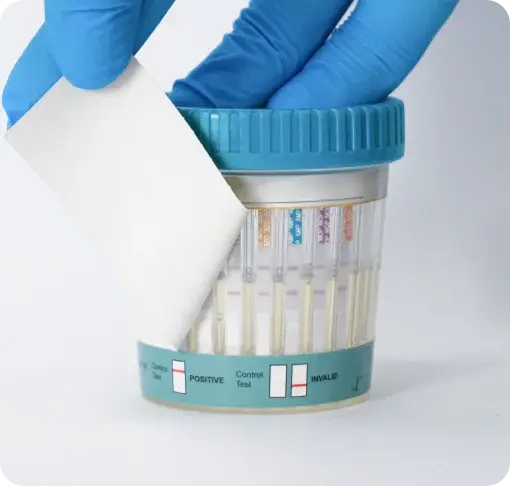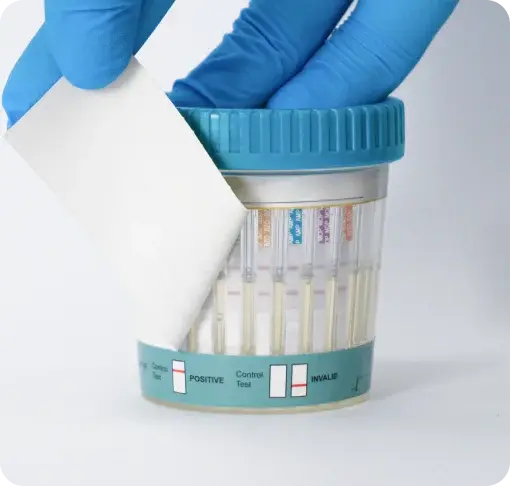A Complete Guide for Employers and Healthcare Providers
Oxycodone is a widely prescribed but highly misused opioid painkiller. As opioid-related harm continues to impact workplaces and healthcare settings, it’s crucial for employers, occupational health teams, and clinicians to understand how oxycodone is detected, what it shows up as, and how to manage testing outcomes.
In this article, we explore how oxycodone appears on drug tests, how long it stays in the system, and what employers and healthcare providers need to know when interpreting test results.
What Is Oxycodone?
Oxycodone is a semi-synthetic opioid used to treat moderate to severe pain. It is typically prescribed under brand names like OxyContin, Percocet (when combined with paracetamol), and Endocet. While effective when used as directed, oxycodone is also frequently misused for its euphoric effects, making it a major concern in both clinical and workplace environments.
In the United States, oxycodone has played a central role in the opioid epidemic, with widespread overprescription contributing to significant rates of dependency, overdose, and death. While the UK has not seen the same scale of crisis, concerns are rising. Recent trends indicate increasing misuse of prescription opioids across Europe, including the UK, with the European Drug Report 2025 highlighting a rise in opioid-related harms and treatment demand. UK clinicians and employers are being urged to take proactive steps to monitor and manage opioid use more closely to prevent a similar crisis from unfolding.
Street names include:
- Oxy
- Hillbilly Heroin
- Blues
- Kickers
- O.C.
- Roxy
Will Oxycodone Show Up on a Drug Test?
Yes. Oxycodone will show up on a drug test. However, not all standard drug panels detect it unless specifically included. This is because oxycodone is structurally different from other opiates like morphine or codeine, meaning some basic opiate panels may miss it.
Oxycodone is typically detected as OXY on drug testing strips. Some advanced multi-panel tests, such as 10-, 12-, 14-, and 16-panel drug tests, will include a specific panel for oxycodone to ensure it’s not confused with other opiates.
Which Drug Tests Detect Oxycodone?
Both test types can differentiate oxycodone from other opioids and are used in occupational, legal, and clinical settings.
How Long Does Oxycodone Stay in the System?
Test Type |
Detection Window |
| Urine | 1-4 Days |
| Saliva | 1-2 Days |
Several factors can affect detection time:
- Dosage and frequency of use
- Type of formulation (immediate vs. extended release)
- Individual metabolism
- Kidney and liver function
- Body mass and hydration
Can a False Positive Happen?
False positives for oxycodone are uncommon, but can occur with:
- Certain prescription medications
- Over-the-counter codeine-based products
- Sample contamination
If a point-of-care test indicates a non-negative, confirmatory testing using GC-MS or LC-MS is recommended. These lab-based methods eliminate ambiguity and offer accurate identification.
What Does Oxycodone Look Like on a Drug Test Result?
At AttoSure, we use drug test kits with clearly marked strips for oxycodone, typically labeled OXY. This panel specifically detects oxycodone and its major metabolite, oxymorphone.
If the OXY panel shows a positive result, it is marked as a non-negative. This does not necessarily mean the person is impaired at the time of the test—but it does indicate the presence of the substance in their system.
In workplace scenarios, a non-negative test often leads to:
- Temporary removal from safety-sensitive duties
- A lab-based confirmation test
- Review and follow-up under company policy
Why Employers and Clinicians Test for Oxycodone
Oxycodone can cause sedation, slowed reaction time, and impaired motor function—posing significant risks in safety-critical roles. That’s why many employers include it in:
- Drug and alcohol workplace policies
- Pre-employment screenings
- Random testing programs
- Return-to-work evaluations
- Addiction monitoring protocols
Industries where oxycodone testing is especially important include:
- Construction and heavy machinery
- Transportation and logistics
- Manufacturing
- Emergency services and healthcare
- Education and childcare
You can test your knowledge with our expert-designed quizzes tailored for workplace and healthcare settings. We pride ourselves on delivering first-class educational content, created by our team of scientific experts. Browse our selection of quizzes below.
Final Thoughts
Oxycodone is a potent and potentially dangerous prescription opioid. As misuse continues to rise, it’s essential for employers and healthcare professionals to implement reliable testing protocols.
At AttoSure, we provide oxycodone testing solutions through urine and saliva drug test kits, supported by laboratory confirmation and expert consultation.
Request a Quote


